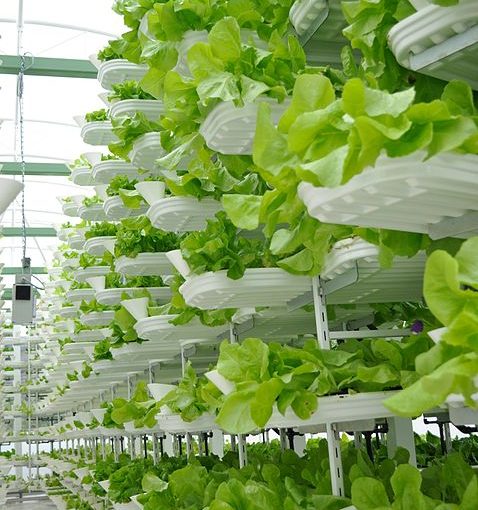by David Parmer / Tokyo
These days the mainstream media seems to have a few stories: the COVID-19 pandemic and US President Donald Trump, and Hong Kong. While these are important matters that concern us all, many more things are going on in our world that do not receive the attention that they might. These are often stories related to the sciences, and except for Information Technology, stories of a scientific nature are somewhat neglected.
One such neglected story is the human outreach to the edges of space. Humans are returning to our moon, and from there to Mars. Several Mars missions are already on the way. Another story worth mentioning which gets scant mainstream media attention is vertical farming.
And what exactly is vertical farming? The easiest answer is plants being grown in stacked trays, meters, or stories high. We have all probably seen a photo of such indoor farming, but maybe couldn’t quite understand what is going on. What is going on is very exciting indeed.
Using Controlled Environmental Agriculture (CEA) scientists and entrepreneurs are using indoor farming techniques to grow crops all year long indoors. Techniques used include:
- Hydroponics-the growing of plants in nutrient-rich solutions
- Aquaponics-combning aquaculture or fish farming with hydroponics in a mutually-supporting system
- Aeroponics-growing crops in an air or mist medium
The object of vertical farming is to aim for maximum crop output using limited space. Space used for vertical farming is also often under-utilized or non-utilized locations such as underground tunnels, warehouses, shipping containers etc. Space saving and high crop yields are not the only benefits of vertical farming. Vertical farms are not subject to weather fluctuations and are less disruptive to native habitat. Crops can also be grown without pesticides offering the benefit of both organic produces and the lack of chemical residue.
The downside of organic farming at present is a very high initial cost of setting up, particularly the cost of urban real estate. However, with the COVID-19 pandemic and its emphasis on teleworking, urban renters may have excess space on their hands that makes urban farming more affordable. Also there is, as a rule, an emphasis on using unused space for vertical farming, and this too might reduce setup costs.
The other big drawback to vertical farming at present is the constant need for energy. How this will be addressed in the future seems to be the key to the feasibility of the spread of vertical farming and its sustainability.
New technologies and new trends are taking place everywhere around the world and around the clock. It is up to us to keep our eyes and ears open and look and listen beyond what the mainstream media has to offer us.
Photo: Vertical Farm via Wiki
 日本語
日本語 English
English 中国語
中国語